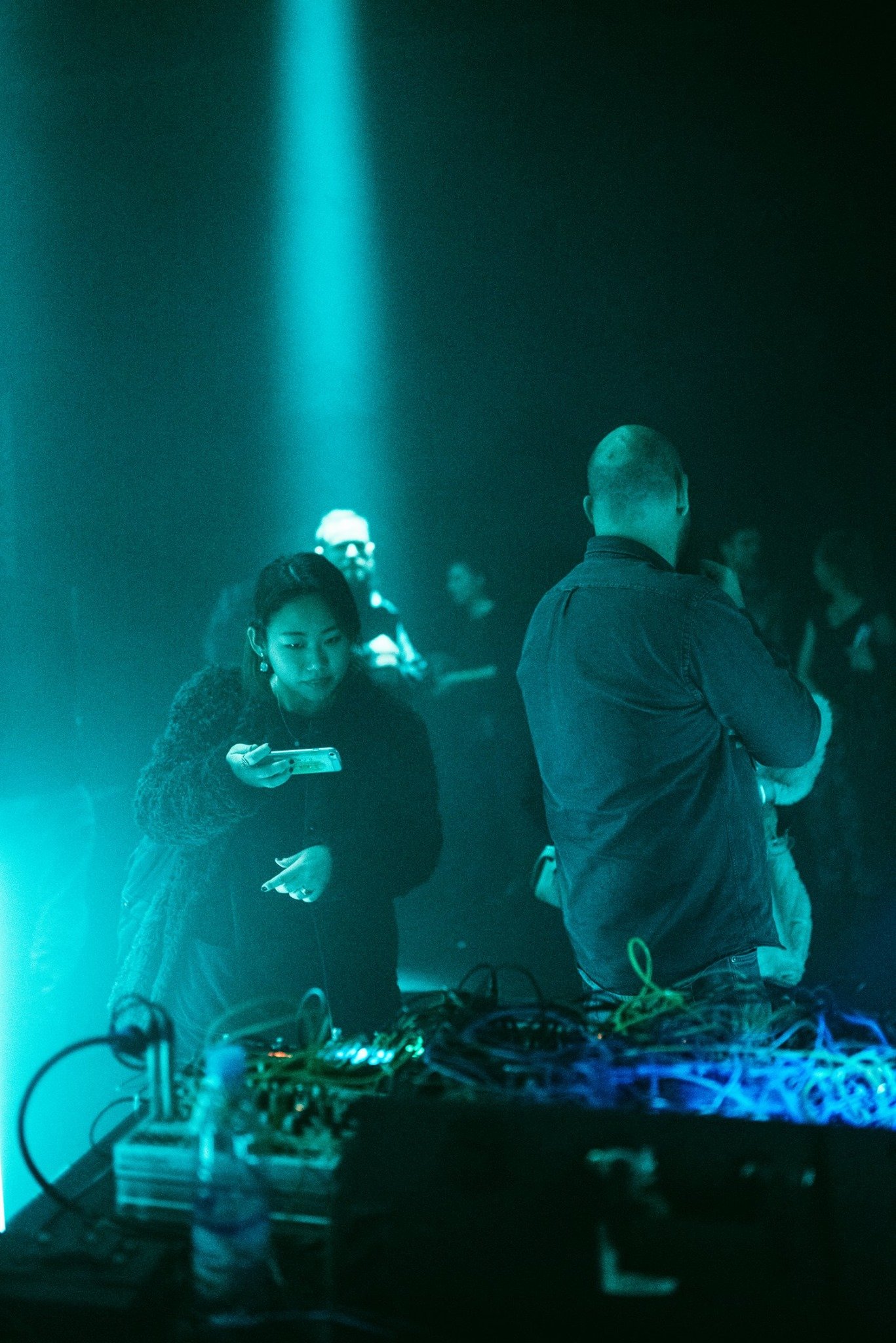
Welcome. My name is Keith; I’m a composer of Live-Electronic & Computer-Music living in Brooklyn. After winding down activities considerably during a domestic sojourn to Australia & the near-contiguous pandemic, I have resumed fielding offers to travel & perform music.
Please get in touch (below) if you have something specific to propose; I’m all ears.
2025 :
-
Formative experiments in software-based micro-sequencing & generative rhythms coupled with novel digital signal processing techniques (as Hrvatski) gave way to the ongoing exploration of glacially-paced shifts in timbre & tonality (“Playthroughs”) segueing into the pairing of relatively primitive analogue-computing concepts & contemporary sound-tools to yield deceptively complex, self-sustaining musical frameworks (“Generators”, “Occlusions”, & “Redactions”). In parallel, repeat-commissions from the GRM to compose for & diffuse Electroacoustic works on the Acousmonium have brought a childhood fascination with Musique Concrète & Tape-Music full circle.
While initially concerned primarily with making records (for kranky, Planet µ, Editions Mego, PAN, Nakid, & countless others) in the interim focus has shifted to performing, with over 500 concerts under the belt; many at the world’s most prestigious festivals (CTM, Dokumenta, FAQ, Geometry of Now, LUFF, Mutek, Présences Electroniques, Semibreve, Skaņu Mežs, Sonic Acts, Terraforma) & houses of culture (the Banff Centre, Berghain, Cafe OTO, EMPAC, Fylkingen, the Guggenheim, HEK, L'Auditori, Maison de la Radio, MASS MoCA, Paradiso, Pioneer Works, Podewil, REDCAT, Saint Vitus, Sydney Opera House, Volksbühne).
Gaining access to the prototype Paperface & SF Tape Music Center 100 systems at HUSEAC kicked off a life-long love affair with “Period” Electronic Instruments, leading to works (“Multiples”) for a litany of obscure & regional designs including those by Buchla, Coupigny, Delta Music Research, EMS, Hordijk, Moog, Publison, Serge, Steiner-Parker, & the Triadex Muse. This interest has culminated in collaborations, residencies, & teaching engagements at the Columbia Univsersity Computer Music Center, Elektronmusikstudion (EMS) Stockholm, Melbourne Electronic Sound Studio (MESS), National Music Centre (NMC), Swiss Museum and Centre for Electronic Music Instruments (SMEM), & Willem Twee.
In addition to all of this, a side-career working in Music Distribution (first apprenticing at Forced Exposure, then running Mimaroglu Music/Sales, Broken-Music, & now Alpha State NYC) as well as ongoing research projects into the deepest recesses of Early Electronic & Experimental Music (most famously materializing as Creel Pone) & their associated radio programs on Montez Press & The Lot have kept me busy. I’ve been commissioned to write articles & essays on topics ranging from Ambient Music, to the “Ghost In The Machine” phenomenon, to figures such as Roland Kayn, Harry Bertoia, and Don Buchla & Pauline Oliveros. I’ll field the odd request for audio post/production work, beta testing & music hardware/software consulting & development; anything to stay busy.
-
Keith Fullerton Whitman
Greg Davis
SaapatoThursday January 9th
Doors 6:30PM / Show 7:00PMThe Howe Theater
Roosevelt Island Cultural Center
548 Main Street
Roosevelt Island, NY 10044 -
This was the first session of my 2025 “Alpha State” residency on The Lot Radio; I’ll be ‘performing’ a two-hour real-time 4-deck mix every four weeks throughout this year, so please keep an eye on the social media engines (arguably I’m the most present on BlueSky & Instagram these days) for a heads-up when they’ll be broadcasting live, and then when they’ve been posted to YouTube™ & SoundCloud (usually the next day). Here’s what I played:
First Hour (Electroacoustics)
1. Bernard Parmegiani; "Thalassa (1971)" (from "Early and Rarities", 2024)
2. Leo Küpper/Exequiel Virasoro; "Automatismes sonores: IV" (from "The Avantgarde Series", 1971)
3. Ben Vida; "The Untitled (July 2020)" (from "En el fin del mundo, hasta el fin del mundo", 2020)
4. Walter Marchetti; "Per La Sete Dell'Orecchio (Excerpt)" (from: "Fluxus Anthology", 2001)
5. Florian Hecker; "Resynthese FAVN (iw 0.99 – sw 0.01)" (from "Resynthese FAVN", 2024)
6. Wolf Vostell; "Elektronischer Dècoll/age. Happening Raum" (from: "Fluxus Anthology", 2001)
7. Manuella Blackburn; "Home Truths" (from "Interruptions", 2024)
8. Squarepusher; "4026 Melt 5" (from "Vacuum Tracks", 2006)
9. Bill Orcutt; "Side B" (from: "AN ACCOUNT OF THE CRIMES OF PETER THIEL AND HIS SUBSEQUENT ARREST, TRIAL AND EXECUTION", 2017)
10. Leonard Rosenman; "Main Title Sound Effect Suite" (from "Fantastic Voyage", 1966)
11. Six Organs Of Admittance; "The Scout Is Here (Twig Harper Remix)" (from: "Companion Rises", 2024)
12. Jerry Goldsmith; "J.J. Gittis" (from "Chinatown", 1974)
13. Ahmed Essyad; "Sultane, pt. I" (from "Moroccan Electroacoustic Music 1972-74", 2024)
14. Paul Kelday; "Lament for the Victims of Violence" (from "Beyond The Perimeters", 2020)
15. Ikue Mori; "Day of Locusts" (from "Labyrinth", 2001)
16. Sarah Belle Reid; "Collide" (from "MASS (Extended + Remastered)", 2024)
17. David Jackman; "Blues" (from "Snatch 3", 1981)
18. Matt Weston; "Burials To Understanding" (from "Communism Has Appeared On The Scene", 2024)
19. Bülent Arel; "Stereo Electronic Music No. 1" (from "Columbia-Princeton Electronic Music Center", 1964)
20. Gustavo Diaz Jerez; "Morse-Thue (Base 2, 8khz)" (from "Fractal Sounds, Vol. 1", 2012)
21. Joker Nies; "Intruder Alert" (from "Hordijk, Vol. 2", 2023)
22. Nashim Ximena Gargari; "Ensifera Ventum 1" (from "EcoSono Environmental Computer Music and Sound Art", 2018)
23. farmersmanual; "rec1-sine01-combined" (from "shmip", 2022)
24. Guido Gamboa; "Peirce on Arbitrary Heterogeneity" (from "All Is Not Coherent in Nature: Polystudies for Algorithm & Electric Guitar", 2024)
25. Tetsu Inoue; "tane" (from "Yolo", 2005)
26. Manja Ristić / Joana Guerra / Verónica Cerrotta; "O vento retoma o seu lugar inicial" (from "Slani pejzaži", 2024)Second Hour (Deconstructions)
1. Ale Hop Laura Robles; "Defensoras del morro" (from "Agua dulce", 2023)
2. Den Sei Kwan; "− 2" (from "P'", 2020)
3. KAKUHAN; "MT-STM" (from "Metal Zone", 2022)
4. Kiiro Radical; "Denki Noise Dance 4" (from "Denki Noise Dance", 1981)
5. Kindohm; "CONNECT malone" (from "GET", 2023)
6. kirkis; "Linen Air" (from "halogen disk 1", 2020)
7. Little Movies; "Lil Flicks" (from "OCCii Compilation Deluxe Edition", 2021)
8. Lōtic; "Bulletproof" (from "Power", 2018)
9. Limpe Fuchs & Mark Fell; "Dessogia II (Original Mix)" (from "Dessogia / Queetch / Fauch", 2024)
10. M.E.S.H.; "Dzonot" (from "Hart Aber Fair", 2019)
11. Mark Fell; "Multistability 6-B" (from "Multistability", 2010)
12. MONOPOLY CHILD STAR SEARCHERS; "POLTERGEIST FORMS OF PRAYING MANTIS" (from "THIS YEAR IN COCONUTS VOLUME 2", 2024)
13. Mumdance & Logos; "Hall Of Mirrors" (from "Proto", 2015)
14. Moondog; "Ray Malone Softshoe" (from "All the Best", 2017)
15. Nishimura Alimoti; "Nakayubi Tomare" (from "Shibou", 1981)
16. Nobukazu Takemura; "Toybox With Moonshine" (from "Child & Magic", 1997)
17. NYZ; "RLD minitonkla" (from "NTE GDN", 2018)
18. Pessimist; "Sattyuzai" (from "Music 1", 1981)
19. Plus Instruments; "Things" (from "Februari - April '81", 1981)
20. Russell Haswell; "RUNG Bonus Beats #8" (from "RUNG Bonus Beats", 2020)
21. Rook Valard; "Crowslish" (from "Alt.Frequencies 3", 1998)
22. Roberto Musci; "The Age of Fragmentation" (from "Cargo Cult", 2024)
23. Sd Laika; "Peaked" (from "That's Harakiri", 2014)
24. Slikback; "Dread" (from "Data", 2025)
25. Spednar; "exp 5" (from "Coniunctio", 2021)
26. Vladislav Delay; "Anima / A" (from "MP3 Collection", 2005)
27. Synalegg; "dytt0" (from "hArm0nii tanD3m", 2022)
28. William Fields; "Tempo Rubato" (from "FieldsOS", 2019)
29. William Fields; "Drum and Bass" (from "FieldsOS", 2019)Click on any album title to link to its respective page on Bandcamp (or, failing a digital release there, the Discogs listing); many of these can also be had from local record shops such as Record Grouch (right up the street from The Lot in Greenpoint) or Academy Record Annex (ditto).
-
Second session of the 2025 “Alpha State” residency on The Lot Radio! One hour of (contemporary & historic) Electroacoustics, one hour of Deconstructions, with four tracks/pieces playing simultaneously throughout; madness. This is already up on YouTube™ & SoundCloud, so please have a look/listen. Here’s what I played:
Hour 1 (Electroacoustics)
1. Luc Ferrari; "Ça va bien, merci ! (1989)" (from "Complete Works 09", 2024)
2. Diane Barbé; "le grand jardin de coupigny" (from "musiques tourbes", 2024)
3. Lau Nau & Joshua Burkett; "~ 3" (from "~", 2025)
4. Tomutonttu; "Spiralisoivasti soiva (jäädytetty)" (from "Halki pilvien", 2024)
5. James Rushford; "Quire I" (from "Turzets", 2024)
6. James Rushford; "Quire III" (from "Turzets", 2024)
7. Toshi Ichiyanagi (一柳慧); "Shikisokuzekuu-Kuusokuzeshiki (色即是空空即是色)" (from "Obscure Tape Music of Japan vol. 20", 2016)
8. El Jardín de las Matemáticas; "El Golem Gordo" (from "El Jardín de las Matemáticas", 2024)
9. Jonty Harrison; "Pair/Impair (1978)" (from "Articles indéfinis", 1996)
10. Juan Hidalgo; "Étude de stage (1961)" (from "Five Spanish Pioneers of Electronic and Experimental Music 1953-1969", 2024)
11. Intermodulation/Tim Souster; "World Music - Orbit I" (from "Connections (1970 - 1974)", 2024)
12. Katalin Ladik; "White Bird (2019)" (from "Water Angels", 2021)
13. Thilges3; "Pop.Aka.Pop" (from "Prototype - Armaments and Armatures Against Electronic Music", 2003)
14. Nate Wooley; "Stump The World (1)" (from "Henry House", 2025)
15. Todd Carter, Brent Gutzeit, Doug Lussenhop; "December 11, 1997" (from "Myopic Bookstore Improvised Music Workshop Volume One", 1999)
16. Gilles Gobeil; "Nuit cendre" (from "dans le silence de la nuit...", 2001)
17. Udo Wid; "Elf-Observatory [15° 18' 13" East / 48° 34' 39" North] Measuring Signal" (from "Prototype - Armaments and Armatures Against Electronic Music", 2003)
18. Freeka Tet & Amnesia Scanner; "FTAS Icaros (PNG noise cancellation)" (from "HOAX", 2024)
19. Nicolas Jaar; "Radio Chomio (con Eli Wewentxu)" (from "Piedras 2", 2024)
20. Bill Nace; "Clips II (A10)" (from "Clips II", 2024)
21. Koji Marutani; "Rain (feat. Toru Yamanaka)" (from "blueCubism - transcoded audio structures", 1999)
22. Ben Patterson, Davide Mosconi, Gabriele Bonomo, Philip Corner, Phoebe Neville, Walter Marchetti; "Paper Piece (1960)" (from "Early Works", 1999)
23. Gavin Gamboa; "stringQuartet-i: { 6 };" (from "Quartet Forensics", 2015)
24. Gordon Longfellow; "350-2" (from "Electronic Kabuki Mambo: Highlights From The Legendary Vortex Experiments At San Francisco's Morrison Planetarium", 2002)
25. Karlheinz Essl; "FABRIC - Dreaming Schubert (2017)" (from "Il ritorno di Kreisler E.T.A. Hoffmann", 2022)
26. R. K. Faulhaber; "OCE" (from "Dugong Weeps", 2021)
27. Jean Dubuffet; "Diligences futiles" (from "Expériences Musicales (II)", 2022)
28. David Edren; "Dance Of The Codariocalyx" (from "Music For Mimosa Pudica & Codariocalyx", 2023)
29. Leilehua Lanzilotti; "find" (from "forever forward in search of the beautiful", 2024)
30. John Wall and Alex Rodgers; "Herd Vectiv" (from "Herd Vectiv", 2024)
31. Matthias Puech; "Tunnel Vision" (from "A Geography Of Absence", 2021)
32. John Chantler; "A Season Later (for RH)" (from "Hordijk, Vol. 1", 2022)
33. Nexcyia; "Bend" (from "Exodus", 2024)Hour 2 (Deconstructions)
1. Madalyn Merkey; "Gypsy Woman" (from "Standards", 2021)
2. Han Bennink; "01 - Title" (from "Drums Solo - Loft, Köln - AUD - 24bit96", 2024)
3. Aksak Maboul; "Drums" (from "1980-04-20 at the Rock In Opposition Festival, Reims", 2024)
4. Pat Thomas; "Step 1" (from "This is Trick Step", 2024)
5. Jack Ruby; "Destroy/Lost" (from "Hit and Run", 2014)
6. Aho Ssan; "Tetsuo II" (from "Rhizomes", 2023)
7. Funkstörung; "Side A - Misch" (from "Mischmasch", 2024)
8. IKTS; "Seq7" (from "NEURAL SYNTHESIS EP", 2020)
9. Selman; "Bento Beater" (from "Rungler Acid", 2023)
10. Charmaine Lee & Ikue Mori; "Three Shades and a Lime (jondownload remix)" (from "Elevator Music", 2024)
11. Cam Deas & Jung An Tagen; "That (yGrid/D#) (Second Woman Remix)" (from "Presentism", 2021)
12. Jean-Luc Guionnet & Will Guthrie; "Bounce" (from "Electric Rag", 2021)
13. Jessica Ekomane; "MR.2023.9.5-A3" (from "Temporary Stored II", 2024)
14. Black Pus; "Gothic Socks" (from "Terrestrial Seethings", 2024)
15. Jim Shepard; "Quotients & Numbers" (from "Picking Through the Wreckage with a Stick", 2024)
16. Ensemble Economique; "Radiate Through Me (Steven Porter Remix)" (from "Steven Porter Remixes", 2017)
17. Aleksi Perälä / Nick Forte; "Untitled (Colundi Everyone) / Druse" (from "Kern, Vol. 3", 2016)
18. The Shadow Ring; "Wash What You Eat" (from "1996-97 Where Two Points Divide", 2024)
19. Jan Jelinek; "Lithiummelodie 1" (from "Kosmischer Pitch", 2025)
20. Maalem Houssam Guinia; "Jangari جانگري" (from "جوف الليل - Dead of Night", 2024)
21. Yximalloo; "O'Dwell" (from "Sakura Musique 2007-2014", 2017)
22. Tolerance; "Dose 03" (from "Dose", 2020)
23. Yximalloo; "Kuse" (from "Sakura Musique 2007-2014", 2017)
24. Feminist Improvising Group; "Any Trouble" (from "Radio Hamburg 1980-10-03", 1980)
25. Clinton Green; "Out of the Fog" (from "Lucid Lucid Lucid Lucid Lucid Lucid", 2024)
26. Klaus Weiss; "Eternity" (from "Time Signals", 1978)
27. Eddie Prévost; "Flayed" (from "Flayed / Crux", 1995)
28. Yoshio Machida (町田良夫); "Aug 16, 2004 'Isea2004', Slija Ferry, Baltic Sea, Finland " (from "Steelpan Improvisations: 2001-2008", 2009)
29. Norbert Eisbrenner, Conrad Schnitzler, Sven-Åke Johansson; "Mariental-Horst" (from "Mariental Tapes", 1970)
30. Eugene Carchesio; "Circle Music 4" (from "Taster's Menu", 2025)31. Ornette Coleman, Bern Nix, James Blood Ulmer, Fred Williams, Denardo Coleman, Ronald Shannon Jackson; "Sleep Talking" (from "Festival de Jazz d'Antibes, Juan-les-Pins - 16bit48 - 1978-07-22", 1978)
Click on any album title to link to its respective page on Bandcamp (or, failing a digital release there, the Discogs listing); many of these can also be had from local record shops such as Record Grouch (right up the street from The Lot in Greenpoint) or Academy Record Annex (ditto).
-
Third session of the 2025 “Alpha State” residency on The Lot Radio! One hour of (contemporary & historic) Electroacoustics, one hour of Deconstructions, with up to four tracks/pieces playing simultaneously throughout. The theme this month was to play a pair of pieces from a few key records that straddle the line between each train-of-thought. The tracklisting is as follows:
Hour 1 (Electroacoustics)
1. José Augusto Mannis; "Cyclone (1983)" (from "Musica Electroacustica de Compositores Latinoamericans", 1995)
2. crys cole; "Making Conversation" (from "Making Conversation", 2024)
3. Annette Vande Gorne; "Feu, Deuxième Elément (1986)" (from "Tao", 1993)
4. Universal Cell Unlock; "Doing The Job No Other Could Do" (from "Quasimodo The Streetsweeper", 2024)
5. Zdena Rosolová, Svatava Rumlová A František Derfler; "Text Pro M. M. (1964)" (from "Fragmenty 1963/1964", 2002)
6. Hands To; "For Harry" (from "Klangfiguren", 2023)
7. jonáš gruska; "temporal deceleration" (from "harkening critters", 2024)
8. Teresa Burga; "Mensaje 4 (de 4 Mensajes) (1974)" (from "Estructura Propuesta Sonido: Piezas para instalaciones y composiciones con notas al azar (1972-2017)", 2023)
9. Pavel Milyakov; "GTR Chords Movement 1" (from "Random and Emblematic: The Sound of Space", 2023)
10. Janez Maticic; "Tri Vizije Op. 46: Extasis (1975)" (from "Extasis - Elektroakustična Glasba", 2011)
11. Raglani; "Love" (from "Days Of Evaporation (Pre-Master)", forthcoming, 2025)
12. Arne Mellnäs; "Eufoni (1969)" (from "Music for Tape / Band - Musik From Sweden / Aus Schweden / Från Sverige", 1973)
13. The Will Gregory Moog Ensemble; "Noise Box" (from "Undercurrents", 2015)
14. Nicolas Collins; "Lightning Strikes Not Once But Twice" (from "America the Beautiful", 1994)
15. Dean Spunt; "Find Me in the Forums" (from "Basic Editions", 2024)
16. Drew McDowall; "Agalma VII (demo)" (from "Lamina", 2023)
17. Zeno van den Broek & HIIIT; "MA(N|CHINE) - Movement one: System" (from "Relatum", 2024)
18. Robert Schwarz; "BCL" (from "Stridulations 1-14", 2024)
19. Louis Haiman; "Wander" (from "Extending Electronic Music's Lineage...", 200)
20. Ricardo Dal Farra; "Memorias (1992)" (from "Musica Electroacustica de Compositores Latinoamericans", 1995)
21. Büşra Kayıkçı; "Genius Loci" (from "Random and Emblematic: The Sound of Space", 2023)
22. Beth Anderson; "Ode (1975)" (from "Peachy Keen-O", 2003)
23. Bengt Emil Johnson; "Through the Mirror of Thirst (Second Passage) (1969)" (from "Music for Tape / Band - Musik From Sweden / Aus Schweden / Från Sverige", 1973)
24. Janet Beat; "Piangam (1978-9) 2nd Movement "Nocturne" For Piano And Tape" (from "Pioneering Knob Twiddler", 2021)
25. Don Hünerberg, Peter Gillespie; "You Excite Me" (from "Phase Murmur", 2025)
26. François J. Bonnet; "Banshee" (from "Banshee", 2025)
27. Voice Crack; "With a Shot of Pink" (from "Below Beyond Above", 1997)
28. Eduardo Polonio; "Alejandría" (from "Acaricia la Mañana", 1984)
29. andrew pekler; "interspecies rhythm study (m.ocharcea, synthetic percussion, chords and bass)" (from "harkening critters", 2024)Hour 2 (Deconstructions)
1. Angelwings Marmalade; "Sushi, Xylitol, Live Resin, Dan McLellan" (from "As The Motherboard Watched Back", 2024)
2. Suicide; "Maxs Jan 13 (Ghostrider / Rocket USA / Cheree / Dance / 96 Tears / Frankie)" (from "Live 1977-1978", 2008)
3. Michelle Lou & Stefan Maier; "Live at UCSD" (from "Live at UCSD", 2024)
4. crying chiyo; "Sculptures In The Rain" (from "All Around Alienated", 2025)
5. Matthew Ryals; "etude no. 10 (take 8)" (from "Generative Etudes Vol. 3.0", 2025)
6. Ben Kudler; "The Luminous Melody of Proper Sound" (from "Pulsar.scramble vol. 3", 2021)
7. Saint Abdullah & Eomac; "Bespoke torture" (from "Light meteors crashing around you will not confuse you", 2024)
8. Beth Anderson; "Ocean Motion Mildew Mind" (from "Peachy Keen-O", 2003)
9. Lomar Spxce; "Shared Telepathy" (from "Extending Electronic Music's Lineage...", 2004)
10. Don Hünerberg, Peter Gillespie; "Mixture" (from "Phase Murmur", 2025)
11. Chuck Bettis; "Disarm Nihilism" (from "Revolutionary Optimism", 2025)
12. Chlorgeschlecht; "Release That Ibiza Feeling" (from "Unyoga", 2003)
13. DJ Ramon Sucesso; "Sexta dos Crias" (from "Sexta dos Crias", 2023)
14. Deena Abdelwahed; "Zardet Sidi Bagra" (from "Dhakar", 2020)
15. Clever Austin; "strange 5" (from "Elec. Tape", 2023)
16. Zuli; "Release +ϕ" (from "Lambda", 2024)
17. Carl Erdmann; "Holobizzare" (from "Bizzarrophytes", 2022)
18. Zuli; "The Horn" (from "Lambda", 2024)
19. Portion Control; "Collapsed" (from "Three Times A Day", 1983)
20. Kavain Wayne Space & XT; "Side A" (from "YESYESPEAKERSYES", 2024)
21. Zusaan Kali Fasteau; "Night sky" (from "Bliss", 1986)
22. Burnt Friedman; "Tipo Duro (Extended Version)" (from "Hexenschuss", 2023)
23. Bernar Venet; "The Infrared Polarization of the Infrared Star in Cygnus" (from "The Infrared Polarization of the Infrared Star in Cygnus", 1968)
24. Ak'chamel; "Apocalypse by Oud" (from "Rawskulled", 2024)
25. aya; "tailwind" (from "im hole", 2021)
26. Steve Marcus / Miroslav Vitous / Sonny Sharrock / Daniel Humair; "The Echos" (from "Green Line", 1970)
27. Ale Hop & Titi Bakorta; "Así Baila el Sintetizador" (from "Mapambazuko", 2025)
28. Bjarki; "Healing From Memory" (from "A Guide To Hellthier Lifestyle", 2025)
29. Blawan; "NPCs Making Hot Dinner" (from "BouQ", 2024)30. Anthony Braxton; "G N 6 (X' 70B) K '7 (Dedicated To David Tudor)" (from "Recital Paris 1971", 2019)
Click on any album title to link to its respective page on Bandcamp (or, failing a digital release there, the Discogs listing); many of these can also be had from local record shops such as Record Grouch (right up the street from The Lot (in Greenpoint) or Academy Record Annex (ditto).
-
Fourth session of the 2025 “Alpha State” residency on The Lot Radio! These are really breezing by! Sticking with the now-familiar & time-tested format: one hour of (contemporary & historic) Electroacoustics followed by one hour of Deconstructions, with four tracks/pieces playing simultaneously throughout.
Hour 1 (Electroacoustics)
1. Bohdan Mazurek; "Canti (1973)" (from "Would It Sound Just as Bad If You Played It Backwards, Vol. 1", 2022)
2. Noah Jenkins; "Rotations Placement Providence Everywhere (2018)" (from "Without Persistent Environments", 2024)
3. Ivo Malec; "Luminétudes" (from "3L", 1971)
4. Snapir & Aenie; "0202: Ignisomnia" (from "Egression", 2025)
5. Vladimir Ussachevsky; "Of Wood and Brass (1965)" (from "Electronic and Acoustic Works 1957-1972", 1999)
6. Luigi Nono; "Omaggio a Emilio Vedova" (from "Complete Works for Solo Tape", 2006)
7. Raoul De Smet; "Isolde's Dood" (from "Raoul De Smet", 2025)
8. Abdullah Miniawy; "Half a year II نصف عام آخر" (from "Nigma Enigma أنيجم النَجم", 2024)
9. James Hoff; "Half-After Life" from “Shadows Lifted from Invisible Hands", 2024)
10. Af Ursin; "Mistake Five" (from “Classement Vertical", 2016)
11. Ana Dall’Ara-Majek; "Ostinato Micromacro" (from "Radiolaria", 2024)
12. john grzinich; "Sine Space Feedback" (from “Destinations Unknown: Early Tape Experiments, 1993-1995", 1995)
13. Эдуард Николаевич Артемьев (Eduard Nikolayevich Artemyev); "Пропасть (Кф ''Телохранитель'' (1979)) (The Abyss)" (from "Антология. Том II / Anthology. Vol. II", 2023)
14. David Jacobs; "Hanging Pieces, 1970-1971" (from "The Sounds Of Sound Sculpture", 2024)
15. The New Blockaders; "Meta-Klamauk (For Jean Tinguely)" (from "Crincum-Crancum / Meta-Klamauk (For Jean Tinguely)", 2010)
16. Éric La Casa; "S'ombre, Part 1" (from "W2 [1998-2008]", 2010)
17. Terre Thaemlitz; "She Maybe May Be... [Edit]" (from "Snowflakes & Dog Whistles: Best Electroacoustic Ambient & Sexpanic 1995-2017", 2024)
18. Ahti & Ahti; "Nokivesi - Part 1" (from "Nokivesi", 2023)
19. Thea Farhadian; "Mokats Mirza" (from "Tattoos and Other Markings", 2025)
20. Tózé Ferreira; "O Verão Nasceu Da Paixão De 1921" (from "Música de Baixa Fidelidade", 2025)
21. Sydney Spann; "Possession" (from "Sending Up A Spiral Of", 2023)
22. Ellen Phan; "Transform" (from "Free Thinker", 2023)
23. Michael Ranta; "Kagakuhenka" (from "Oto No Hajimari Wo Motomete 4 [Shigeru Sato Work]", 2023)
24. Meng Qi; "Whale Child" (from "Synthetic China Vol 1 合成中国", 2018)
25. toru yamanaka & teiji furuhashi / Dumb Type Theater; "SWEET HOME" (from "睡眠の計画 Plan For Sleep", 2024)
26. Jean Schwarz; "Il était une fois — Esquisse" (from “Mosaïque — Il était une fois", 2021)
27. Jonty Harrison, Stephen Cottrell; "EQ" (from "The Electric Saxophone", 2000)
28. Lâmina; "Éclipse" (from "Sueños acuáticos", 2024)
29. R. Luke Dubois; "July 13A" (from "Modulisme Session 092", 2023)
30. Simon Whetham; "012" (from "Channelling", 2024)
31. Sun Yizhou; "07'46" (from "typewriter in the rain", 2024)
32. Max Eilbacher; "The Third Part of the Night" (from "7 Runs (In Arc Mental Styling)", 2025)
33. Ruth Anderson; "Conversations" (from "Tête-à-tête", 2023)
34. Joji Yuasa; "IBM Music (1976)" (from "Obscure Tape Music of Japan Vol.29 - Music For Gallery Kuniharu Akiyama", 2025)Hour 2 (Deconstructions)
1. Bamba Pana; "Barafu" (from "L'Esprit de Nyege 2020", 2020)
2. Pierre Garnier, Seiichi Niikuni; "Climates (1966)" (from "Phonetic Poetry on Spatialism", 1999)
3. Olaf Rupp; "Bumper Cars" (from "EARTH AND MORE", 2024)
4. Özcan Saraç; "Op.7, 16th movement" (from "Neural Generators of the Auditory Brainstem Response", 2025)
5. Nathan Ho; "Immodality" (from "Haywire Frontier", 2023)
6. Sissy Spacek; "Ascend" (from "Bolero Shield", 2024)
7. Henri Chopin; "Fresque de l'impalpable Voix - Performance au Garage Caméléon - Besançon 03.02.1995" (from "Les Gouffres des Bronches Sont des Cavernes Infinies", 2021)
8. Kieran Daly; "Micropolyphony and quasi-entrainment" (from "Madacy Jazz 063", 2024)
9. Kieran Daly; "Track02" (from "Spike train criteria for nonsalient slow-fast solos", 2023)
10. EVOL; "Large Marge" (from "Slump Trax - - - Bonus", 2023)
11. farmersmanual; "Atkødjealea" (from "The Singles", 2019)
12. Norman McLaren; "Unreleased Composition (1964-1965)" (from "Rythmetic: The Compositions of Norman McLaren", 2024)
13. Zheng Hao; "no-string guitar" (from "Breaks", 2024)
14. Lary 7; "CONCRETOTRON BALLROOM" (from "Larynx", 2023)
15. shaun robert; "p[klopk" (from "anthropocentric disease", 2025)
16. Steve Brenner; "Xebec" (from "ELECTRIKAL CYCLES SEQUENCE", 2019)
17. Twink; "Psychedelic Electrician (Scene 4)" (from "Psychedelic Electrician: 1969 Synthesizer Recordings", 2018)
18. Hali Palombo; "Pullalong" (from "Wobblement", 2025)
19. On Ka'a Davis; "Elsibet Flying About" (from "...Here’s To Another Day And Night For The Lwa Of The Woke", 2024)
20. Leon Senger; "Artificial Conversations: Discussing Intelligence" (from "DEGEM CD 23 - Listening Machines - Ecological Perspectives", 2023)
21. Free Community of the Global City of Peace and Pleasure; "Untitled (Recorded By Dick Raaymakers)" (from "Maciunas Ensemble, The Archives Part 1, 1968-1980", 2012)
22. Akio Suzuki; "Ōhohhōo | オーホッホーオ" (from "KA I KI", 2024)
23. Tashi Dorji; "...and the state sank into abyss" (from "we will be wherever the fires are lit", 2024)
24. Sun Ra & His Astro Infinity Arkestra; "Ra Explains the Bandura" (from "Strange Strings (Expanded)", 2024)
25. Rob Mazurek; "Banana Fruit" (from "Nestor's Nest", 2025)
26. Sven-Åke Johansson, MND; "Tinguely" (from "At Moderna Museet, Stockholm Nineteenhundredseventytwo", 2011)
27. Soft Verdict; "Dog-In" (from "For Amusement Only", 1982)
28. Sote; "WVTBLSSPXZAGROS" (from "Sound System Persepolis [DIAG065]", 2024)
29. Mike Cooper; "The Dark Notes Were Everywhere , So Dark, So Sombre, They Broke Into A Fountain" (from "Slow Motion Lightning", 2024)
30. Rian Treanor, Ocen James; "As It Happens" (from "Saccades", 2023)
31. Luc Ferrari; "March 31st, 1975" (from "Atelier de Libération de la Musique", 2018)
32. Ernie Althoff; "Five Plastic" (from "Colour Chart", 2010)
33. P.D.; "Im Rausch Der Geschwindigkeit" (from "Inweglos", 2017)
34. AGF; "Matsu" (from "netmotif", 2024)
35. Enxin/Onyx; "A Void" (from "In Rupture", 2025)
36. Iannis Xenakis; "S.709" (from "Electroacoustic Works", 2022)
37. emptyset; "Ore" (from "Cybernetics, or Ghosts?", 2024)
38. Simon Pyke; "Friend Zone" (from "Music For Beings", 2024)Click on any album title to link to its respective page on Bandcamp (or, failing a digital release there, the Discogs listing); many of these can be had from local record shops such as Record Grouch (right up the street from The Lot (in Greenpoint) or Academy Record Annex (ditto).
-
WATERWORKS 2025 – FESTIVAL OF EXPERIMENTAL SOUND
Metropolitan Waterworks Museum
2450 Beacon Street
Boston, MA 02467
Tickets
$30 general admission each night
$20 students or members each night
$50 2-day passes (limited availability)
No one turned away for lack of fundsThere is limited parking at the museum. Please use the T (Reservoir or Cleveland Circle stops on the Green line), if possible! The museum is fully accessible to people with disabilities. If you have questions, call the museum at 617-277-0065 or email susanna@nonevent.org.
Night 1: Doors 7:30pm, Music 8pm
id m theft able and The Choir Required, The Peeling Revealing
Nima Janmohammadi
Keith Fullerton WhitmanNight 2: Doors 7pm, Music 7:30pm
Regan Bowering
Lean
Mariam Rezaei
Sheer AnxietyAbout the artists:
Regan Bowering is a percussionist, improviser and sound artist based in London. Her solo work explores various combinations of objects and materials, drums and percussion, amps, speakers, and feedback. Her debut album Solos for _ _ _ _ spaces (Dec 2023, Bezirk Tapes) captures this process across a variety of settings, from cavernous concert halls to studios and micro-edits on a laptop. According to the Quietus, Solos is “a play of contrasts, contradicting voluminous expressions with confined phrases, taming resounding feedback with faint percussive flutters, but one that feels driven by the desire to craft electrifying drama rather than pure autotelic dissonance.” Bowering is one third of a trio with Li Song and Conal Blake, whose tape Music for Snare Drums and Portable Speakers was released on Infant Tree in May 2023.
The Choir Required, The Peeling Revealing is what happens when Maine’sid m theft able puts together and conducts a choir. Known for his insubordinate and virtuosic improvisational approach to electroacoustic music, id m theft able’s performances consist of stream-of-consciousness vocal technique, performative manipulations and gestures with collected objects, as well as the use of an amplified wire and wood sculpture that amasses echoes, shrieks, crashes, and creaks — assembling all manner of media sources. His works fit into an expansive visual universe and release history collected in mangdisc, an audiovisual label that serves as a vehicle for distribution (including a “found” series) that releases modest quantities of individualized works presented in whatever medium is available at the time. Id m theft able performs within and without the realms of noise, avant-improvisation, sound poetry, performance, etc. using voice, found objects, electronics, and whatever else is available. He has given hundreds of performances across four continents in various settings.
Nima Janmohammadi (solo setar) is a composer, improviser, and multi-instrumentalist. As a performer of Persian classical music, he has studied with great masters of Persian Music, including legendary Mohammad Reza Lotfi and Hossein Alizadeh. He has performed in numerous recordings and concerts including solo recitals in venues such as Boston's historic Jordan Hall, MIT, Harvard University, Tuft University, and the Metropolitan Museum of Art. He has recorded two solo Setar albums, The Kiss Belongs to Nobody (2017), and Night of Lilac in the Absence of Language (2023). As a composer, Nima has written for symphony orchestra, chamber music of various large and small ensembles, string quartet, and saxophone orchestra. He has also written open form and graphic scores that incorporate elements of composition and improvisation.
Lean is the sound collage, free bloop duo of Seamus Williams, who also runs the Ayurvedic Tapes label, and Mickey O’Hara (formerly of Floating Shapes). The pair are stalwarts of Worcester’s experimental music scene, where they also host the free form experimental music show Music Under the Moon on WCUW.
Mariam Rezaeiis an award winning composer, turntablist, writer and performer. She previously led the experimental arts project TOPH, and was a curator of TUSK FRINGE and TUSK NORTH for TUSK Festival in Newcastle (UK). Her work— often centered around contemporary turntablism and other experimental forms—has been showcased at the London Contemporary Music Festival, Tectonics Festival, Counterflows, EKKO Festival, amongst others. Rezaei’s music has been described as “high-velocity sonic surrealism” (The Guardian) that “harness[es] extreme technical prowess” (Boomkat). She has earned acclaim for her work from outlets such as London Jazz News, The Guardian, and The Wire magazine. In addition to her solo work, she is one third of The Turntable Trio with Maria Chavez and Victoria Shen. This will be her Boston debut.
Sheer Anxiety is the longstanding duo of Chris Strunk and Andrea Pensado. Boston-based drummer and curator Chris Strunk focuses on cymbal overtones, friction, and using non-traditional objects, such as table knives and marbles. Experimental musician, composer, and concert organizer Andrea Pensado lives in Salem, Massachusetts. Known for her intense live performances, she creates a highly personal sonic language using harsh, dense layers of sounds, often interwoven with her voice.
Keith Fullerton Whitman is a Brooklyn-based live electronics and computer music composer. Whitman’s formative experiments in software-based micro-sequencing & generative rhythms coupled with novel digital signal processing techniques (as Hrvatski) gave way to the ongoing exploration of glacially-paced shifts in timbre & tonality (“Playthroughs”) segueing into the pairing of relatively primitive analogue-computing concepts & contemporary sound-tools to yield deceptively complex, self-sustaining musical frameworks (“Generators”, “Occlusions”, & “Redactions”). In parallel, repeat-commissions from the GRM to compose for & diffuse Electroacoustic works on the Acousmonium have brought a childhood fascination with Musique Concrète & Tape-Music full circle. While initially concerned primarily with making records (for kranky, Planet µ, Editions Mego, PAN, Nakid, & countless others), his focus has shifted to performing, with over 500 concerts under his belt; many at the world’s most prestigious festivals & houses of culture. This will be his first Boston performance in almost a decade!
Waterworks 2025 is presented with the support of the Metropolitan Waterworks Museum, WZBC 90.3 FM, the Newton Cultural Council & Brookline Commission for the Arts (local agencies supported by the Massachusetts Cultural Council), Streetcar Wine & Beer, Café Fixe, and Digital Soup.
Non-Event’s programming is also made possible with the support of the Boston Cultural Commission, The Oedipus Foundation, and the Wagner Foundation.
-
SAT, MAY 3, Rising Edge of a Pulse
An evening of sonic explorations at Light & Sound Design curated by Testu Collective.
Featuring live performances by:
❑ Jad Atoui
Jad Atoui, Beirut-based sound artist and improviser, will be performing “Purge”, a solo piece that reflects on his recent experimentations with modular synth, waves of galactical pads driven by distorted rhythmic bass engines and energetic noise.
❑ Keith Fullerton Whitman + Chuck Bettis
Short attention span electronic movements via guitar, bitwig & max msp.
❑ Testu
Serena & Dan of Testu will create soundscapes from the vibrations of ferromagnetic materials and circulating electromagnetic fields.
7:30pm: Doors
8pm: Performances start
$25 w/RSVP
Greenpoint, BK
Saturday, May 3rd, 8-11pm -
Cleveland Uncommon Sound Project presents:
Re:Sound New & Experimental Music Festival
May 16th & 17th, 2025.
Maria Chávez
Aaron Dilloway & Ra Washington
Sarah Hennies & Tristan Kasten-Krause
Slugg
Keith Fullerton Whitman
C. Spencer YehCopresented at Transformer Station with the Cleveland Museum of Art
-
Karol Konstancia
Hisham Akira Bharoocha & Keith Fullerton Whitman
Eli Wallace
Sleepwalk
251 Bushwick Ave,
Brooklyn, NY 11206
(right off the L Montrose Stop) -
Join Ryan (Skylar Spence, Saint Pepsi) & Keith (Fullerton Whitman) from 1PM-3PM as they run down classic Carpark & Disco Classics in advance of the show @ Public Records that night!
-
-
Fifth session of the 2025 “Alpha State” residency on The Lot Radio! Suffering from a bout of the “Walking” Pneumonia after a busy week, I nonetheless crawled into the studio in Greenpoint early on a Sunday afternoon & with the aid of a Frankel’s sandwich & the time-tested Cel-Ray/Lemon-Ginger tea combo managed to peal out one of the more cohesive shows, with the first hour centered around the blend of the final, “Winter” disc of Joshua Bonnetta’s wonderful “The Pines” & Harley Gaber’s “I Saw My Mother Ascending“ (both of which are heard in full).
First Hour (Electroacoustics)
1. Joshua Bonnetta; Winter (from "The Pines", 2025)
2. Aleksandra Słyż; Tonarium II (from "Tonarium Live", 2025)
3. Oksana Linde; Mundos flotantes (from "Travesías", 2025)
4. Harley Gaber; I Saw My Mother Ascending Mount Fuji (from "I Saw My Mother Ascending Mount Fuji", 2010)
5. Catherine Lamb x Ghost Ensemble; VI. (from "interius/exterius", 2025)
6. Corneliu Cezar; Rota (from "Ansamblul Hyperion", 2025)
7. Enrique Ramírez & Matthias Puech; Le Crépuscule Des Forficules (from "From the Other Side of a Landscape", 2025)
8. Arcane Device; Penetrating Black Ice (from "Fetish", 1990)
9. Rashad Becker; Zero Hour (from "The Incident", 2025)
10. Mads Emil Dreyer, Sistro Duo; Figure Pieces, VIII (from "Figure Pieces", 2025)
11. Cole Pulice; In a Hidden Nook Between Worlds II (from "Land's End Eternal", 2025)
12. Halim El-Dabh; Alcibiadis' Monologue to Socrates (from "Crossing into the Electric Magnetic", 2001)
13. Ernst Karel; Fern Room 3 (from "Fern Room", 2023)
14. Hans Kulk, Waclaw Zimpel; Sri Crickets (from "Breath of Brahma & Sri Crickets", 2022)
15. Max Eastley; Monochord (from "Installation Recordings (1973-2008)", 2010)
16. Laura Cocks; A thread held between your fingers (from "FATHM", 2025)
17. William Tyler; A Dream, A Flood (from "Time Indefinite", 2025)
18. Jules Reidy & Sam Dunscombe; Gracelords (from "Edge Games", 2025)Second Hour (Deconstructions)
1. Theo Burt; Snap! 'Rhythm Is a Dancer' divided into eighth-beats and reordered so that each piece is followed by the piece most similar to it from those remaining (from "Automatics Group Remixes - Archive 2012 to 2016", 2023)
2. Barker; Reframing (from "Stochastic Drift", 2025)
3. Konk Pack; Odile Meets Kipper (from "Big Deep", 1999)
4. Calum Gunn; Longevity (from "Burnt Motto", 2024)
5. Jean-Marc Montera; Micriosystem Area Project (from "Smiles From Jupiter", 2000)
6. Heith; Come, Sweet (feat. James K) (from "Escape Lounge", 2025)
7. Anton Bruhin, Wanja Gwerder; Täktli (from "Maultrommel, Mundharmonika, Kamm", 1979)
8. Amelia Cuni; Solo for Voice 58: Raga 18 (from "Solo for Voice 58: 18 Microtonal Ragas", 2007)
9. Diseno Corbusier; Plegaria (from "El Alma de la Estrella", 1986)
10. Didem Coşkunseven; A Strange Place (from "A Strange Place", 2025)
11. Chad M. Clark; Tables for Light (from "Moun Dons (DT-003)", 2021)
12. Walter Maioli, John Zandijk; Track 1 (from "Star Rover", 2025)
13. Kurt Weisman; Ghost Pipes (from "Ghost Pipes", 2025)
14. Masahiko Satoh; Multi-Spheroid Part 1 (from "Multi-Spheroid - Solo Piano 3", 1977)
15. MATS LINDSTRÖM; LOW FIDELITY I (from "LOW FIDELITY", 2025)
16. Chuquimamani-Condori & Requisit; Red Road (from "Red Road", 2023)
17. Dexter Wansel; Rhodes Piano One (from "Keyboard Riffs For DJ's Volume 2", 1993)
18. Elkotsh; Mwlid Ala’sar (from "rhlt jdi", 2025)
19. N.M.O.; La musica inizia quando la ascolti o quando la fai? (from "Nuova Musica Ostinata", 2019)
20. Mattin, Asha Sheshadri; Slices of Life (from "Slices of Life", 2023)
21. Evan Pincus; Varispeed (from "Scenes and Movements for Tenor Guitar", 2025)
22. Topdown Dialectic; 10 (from "/\\09", 2015)
23. Ferial Confine; Part 4 (from "The Full Use Of Nothing", 1985)
24. Zazou, Bikaye and CY1; M'Pasi Ya M'Pamba (from "Noir Et Blanc", "1983)
25. This Heat; Paper Hats (from "1979-10-20 - Prince of Wales Conference Centre, London, England", 1979)
26. Tête de Chou; – B – … and thereafter… 1. a minor prang occurs at 5-22-9, 2. cool air yields to the last strings, 3. and the fifth floor awaits silence, 4. as inundation draws the curtains. (from "Tête De Chou", 2025)
27. Pete Cosey (Miles Davis); Gondwana (Outro) (from "Pangaea [SRCS 9130~1]", 1996)
28. Pete Cosey (Miles Davis); Interlude / Theme From Jack Johnson (Outro) (from "Agharta [SRCS 9129]", 1996)29. Dewey Redman; QOW (from "The Ear Of The Behearer", 1973)
-
9th episode (after a gap!) in the Creel Pone Radio series at Montez Press Radio! Celebrate the 20th Anniversary w/ Jacob & I in style w/ many surprises planned.
-
Sixth session of the 2025 “Alpha State” residency on The Lot Radio! Back on the regular Monday-night schedule, this show resumes a more nocturnal approach.
First Hour (Electroacoustics)
1. Corneliu Cezar; "Ziua Fără Sfârșit" (from "Ziua Fără Sfârșit", 2025)
2. Ernst Thoma; "Improvisation mit Programm und live Elektronik" (from "Reels 1977-1986", 2024)
3. Ellen Arkbro; "Nightclouds" (from "Nightclouds", 2025)
4. Sarah Peebles; "Where All the Wild Things Went" (from "Female of the Species Volume 1", 1999)
5. Massimo Toniutti; "Rot im Studio (dritte Sonate)" (from "Rot im Studio (dritte Sonate)", 2021)
6. Matmos; "The Rust Belt" (from "Metallic Life Review", 2025)
7. Anestis Logothetis; "Untitled, Coloured Noise, Tape From the Archive (Vienna, 1962 - 67)" (from "Electroacoustic Works", 2011)
8. Guy Reibel; "Canon sur une trompe africaine" (from "INASOUND Retour aux sources de l'électro avec l'INA GRM", 2018)
9. Costin Miereanu; "Finis-Terre (1978)" (from "Poly-Art Recordings 1976-1982", 2025)
10. Axel Dörner & Richard Scott; "Density Scale" (from "Seven Types of Ambiguity", 2016)
11. Tim Olive; "Flawed Gait 2" (from "Flawed Gait", 2024)
12. Terre Thaemlitz; "Couture Cosmetique (live at Podewil 11/10/99)" (from "Sampling Rage", 2002)
13. Manja Ristić; "The Abyss" (from "Sargassum aeterna", 2025)
14. Repetition Repetition; "Seven and Seven" (from "Fit for Consequences: Original Recordings, 1984-1987", 2025)
15. Hugo Lioret; "AE8B9A19" (from "I", 2023)
16. Joji Yuasa (湯浅譲二); "Voices Coming (NHK Electronic Music Studio) (1969)" (from "Piano Works & Tape Music", 2009)
17. Qasim Naqvi; "Plastic Glacier" (from "Endling", 2025)
18. Robert Cohen Solal; "La Machine à pomper" (from "INASOUND Retour aux sources de l'électro avec l'INA GRM", 2018)
19. Kazunao Nagata & Kenta Araki; "Live Electronics Session At Koenji 2005.4.6" (from "2005.4.6", 2011)
20. Laurie Spiegel; "Passage (1991)" (from "CAA—0", 2012)
21. Russ Hodge; "Baros de mon dan covit" (from "Im Silo - Alte Musik und Neue Improvisationen", 1998)
22. Jörg Thomasius; "Meditation" (from "Acht Gesänge Der Schwarzen Hunde (Experimenteller Elektronik-Underground DDR 1980-1990)", 2022)Second Hour (Deconstructions))
1. Daedelus; "Ult" (from "Tumult", 2024)
2. Rian Treanor with Rotherham Sight & Sound; "Action 1 - Pass The Go" (from "Action Potential", 2024)
3. Logos & Mumdance; "Hall of Mirrors" (from "Proto", 2015)
4. Zeno van den Broek; "The Light of Dawn Drowning in the Clear Plastic of Space" (from "Forming Folds", 2025)
5. Iueke; "Des Fureurs Héroïques" (from "LIES-164", 2021)
6. Tom Carter & Pat Murano; "Astral Light" (from "Songs of Eliphas Levi Zahed", 2025)
7. François Bayle; "Polyrythmie" (from "INASOUND Retour aux sources de l'électro avec l'INA GRM", 2018)
8. Marcel Sletten; "Lamb (Album Version)" (from "Heather and Birch", 2024)
9. Francesco Leali; "Drop, pt. II" (from "Ultrabody", 2025)
10. Peter Laughner; "Lullaby" (from "Peter Laughner • 1973 – 1977 (Pledging My Time)", 2019)
11. DJ Marfox; "Batimento" (from "Não Estragou Nada", 2025)
12. Cyrus Pireh; "Infinite Shred" (from "Thank You, Guitar", 2025)
13. YOKUBARI; "Kumo Tono Kusen" (from "ELECTRONIC KUMOKO cloudchild", 2022)
14. Knurl; "Between The Opposing Beliefs" (from "Obtain By Sacrifice", 2024)
15. Ben LaMar Gay; "roller skates" (from "Yowzers", 2025)
16. Slapp Happy; "The Drum" (from "Acnalbasac Noom", 1980)
17. Richard Scott; "Swerve" (from "Bastard Science EP (OCR-001)", 2025)
18. Nadah El Shazly; "Enti Fi Neama" (from “Laini Tani", 2025)
19. Ernst Thoma; "Winterspiel 4" (from "Reels 1977-1986", 2024)
20. Ariel Kalma, Jeremiah Chiu & Marta Sofia Honer; "Écoute Au Loin" (from "The Closest Thing to Silence", 2024)
21. PER-SON-ELL [Martin Klapper, Sture Ericson, Rex Casswell]; "Paragraph Two" (from "Volume 2", 2025)
22. Jameszoo; "(Egg Modern)" (from "Music for 17 Musicians", 2025)
23. Lamin Fofana; "Niary Ngorong (Caprices Mix)" (from "Holy Tongue, Beatrice Dillon, Lamin Fofana, LABOUR", 2023)
24. Kindohm & Jesse Whitney; "New Death New Life" (from "Three Degrees", 2022)
25. Jeremiah Chiu; "Brush with Thin Air" (from "In Electric Time", 2023)
26. Lyra Pramuk; "Gravity" (from "Hymnal", 2025)
27. Benoît Pioulard; "And" (from "Clear [early 4-track recordings]", 2001) -
Wednesday, June 18
7:30 – 11:30pm$15 Doors at 7:30PM
Will Bollinger 8PM (30 minute set)
Jesse and the Spirit 8:45 PM (30 minute set)
briana grand 9:30 PM (45 minute set)
Keith Fullerton Whitman 10:30 PM -
Seventh session of the 2025 “Alpha State” residency on The Lot Radio! A somewhat brooding affair as a sudden, torrential downpour cast a soggy pall around the newly-reopened Lot Kiosk (certainly switched gears halfway through).
First Hour (Electroacoustics)
1. Farah Kaddour Marwan Tohme; Kayfa Taltaqi el-Qulub (from "Ghazel", 2025)
2. Chiyoko Szlavnics; For Eva Hesse (from "Memory Spaces", 2025)
3. Susana López; Mundus Imaginalis (from "Materia Vibrante", 2025)
4. Vibracathedral Orchestra; 14 / 17 August 2024 (from "14 / 17 August 2024", 2024)
5. Amina Hocine; Ā̄tamōn I (from "Ā̄tamōn", 2025)
6. Dan Kirsten; Electronic Effects (from "Media Music Release No. 4 - Space-Age / Electronic Effects", 1969)
7. Brighde Chaimbeul; Dùsgadh/Waking (from "Sunwise", 2025)
8. Samara Lubelski; V2 (from "V1/V2", 2025)
9. Jojo Takayanagi With John Zorn; Brecht '47 (from "Experimental Performance With John Zorn", 1986)
10. Philip Samartzis; Davis Station (from "Antarctica - An Absent Presence", 2016)
11. Pub; Summer (from "Summer", 2000)
12. Luc Ferrari; Dérivatif (2005-08) (from "Complete Works 15”, 2008)
13. Errance; 3 Timbres oblitérés (from "Timbres Oblitérés", 2024)
14. Jean-Marie MASSOU; C_07 la complainte contre la maternité (from "La citerne de Coulanges", 2018)
15. Osmo Lindemann; Tropicana (1970), Midas (1970) (from "Electronic Works", 2023)
16. ENSEMBLE NIST-NAH; Uncle (from "Spilla", 2025)
17. Andrew Pekler; Globestructures: Option II (from "New Environments & Rhythm Studies", 2025)
18. Lamin Fofana; Shards (East Winds) (from "Out of Water Light Congregates Endlessly", 2025)
19. Amina Claudine Myers; Song for Mother E (from "Solace of the Mind", 2025)
20. Eiko Ishibashi and Jim O'Rourke; Pareidolia (Single Edit) (from "Pareidolia (Single Edit)", 2025)
21. Knud Viktor; Image IX (excerpts) (from "TERRAFORM - I Knud Viktors Lydspor", 2025)Second Hour (Deconstructions)
1. Dj BeBeDeRa; FodanCia Do Mais Velho Aguado (from "Clássico", 2025)
2. Rhodri Davies, C. Spencer Yeh; AADDFFDDAA (from "Relics of the Horsehair Harp", 2024)
3. Laurie Spiegel, Don Christensen; Donnie and Laurie (from "Donnie and Laurie", 2018)
4. Sonology Electroacoustic Ensemble; SEE 20130305 (from "volume two", 2025)
5. Rhodri Davies, Pat Thomas; Maddad (from "Relics of the Horsehair Harp", 2024)
6. Doug Tuttle; Exploding Gavel (from "Fearful Guitar", 2023)
7. Temporal Pain; Waves Hit, Losing It, Baptist Girls, I'm Dead (from "More To Come", 1982)
8. Zuli; Care (from "Care", 2025)
9. Marcia Bassett, Chuck Bettis; Sunview Mar 23 (from "Sunview", 2025)
10. Vox Populi!; Mind (from "Cut Chemist Presents Funk Off Featuring Vox Populi! and Pacific 231”, 2013)
11. Oxomaxoma; Fantasías para Percusiones y Flauta (from "Designios", 2020)
12. Okay Temiz; Denizaltı Rüzgarları (from "Dokuz Sekiz b/w Denizaltı Rüzgarları", 1976)
13. Doug Tuttle; Split Milk (from "Fearful Guitar", 2023)
14. Paul DeMarinis; 3 Easel Studies for Wendy Rogers (from "3 Easel Studies for Wendy Rogers", 2023)
15. Organs Obsolete; Another Fire (from "RRH1", 2025)
16. ROC; MAKINA TRAX VOL. 2 ---- 38 (from "MAKINA TRAX VOL. 2", 2025)
17. Milan Grygar; Akustická Kresba (from "Akustické Kresby / Acoustic Drawings", 2017)
18. Quad; Outer Groove (Parts 1,2 And 3) (from "Q", 1998)
19. Merzbow; Sedonis A (from "Sedonis", 2024)
20. Tim Barnes; Putting Socks On Centipedes (feat. Oren Ambarchi) (from "Lost Words", 2025)
21. Sergio Armaroli, David Toop; Stone and Ocean (from "Decay Music 10: And I Entered Into Sleep", 2025)
22. Kit Clayton; Enkidu (from "Microsolutions #1: Microsolutions to Megaproblems”, 2005)
23. Jäy Condom, Gärs Panter; Old East Texas Plankton, Pandomoniax (from "Durchfall Frum Der Colahaus", 1978)
24. WINO-E; double sundae (extended) (from "WINO-E", 2025)
25. K. Yoshimatu; Platinum Night (from "Melancholy Mix", 1982)
26. Paul Feinberg; roof winter (from "Vacations”, 1979)
27. Analog Tara; Extended Study (Mix) (from "Jomox Studies", 2023)
28. Soula; \ | / '-.;;;.-' -==;;;;;==- ~~~~ .-';;;'-. / | \ (from "Draw me a soundscape in ASCII", 2023)
29. Les Rallizes Dénudés; 黒い悲しみのロマンセ Otherwise Fallin' Love With (from "MIZUTANI / Les Rallizes Dénudés", 2022)Click on any album title to link to its respective page on Bandcamp (or, failing a digital release there, the Discogs listing); many of these can also be had from local record shops such as Record Grouch (right up the street from The Lot in Greenpoint) or Academy Record Annex (ditto).
-
-
The 8th installment of the “Alpha State” residency on The Lot Radio!
-
The 9th installment of the “Alpha State” residency on The Lot Radio!
-
The 10th installment of the “Alpha State” residency on The Lot Radio!
-
Lea Bertucci
Ka Baird
Keith Fullerton WhitmanAvalon Lounge
29 Church St, Catskill, NY 12414 -
The 11th installment of the “Alpha State” residency on The Lot Radio!
-
The 12th installment of the “Alpha State” residency on The Lot Radio!
-
The 13th installment of the “Alpha State” residency on The Lot Radio!































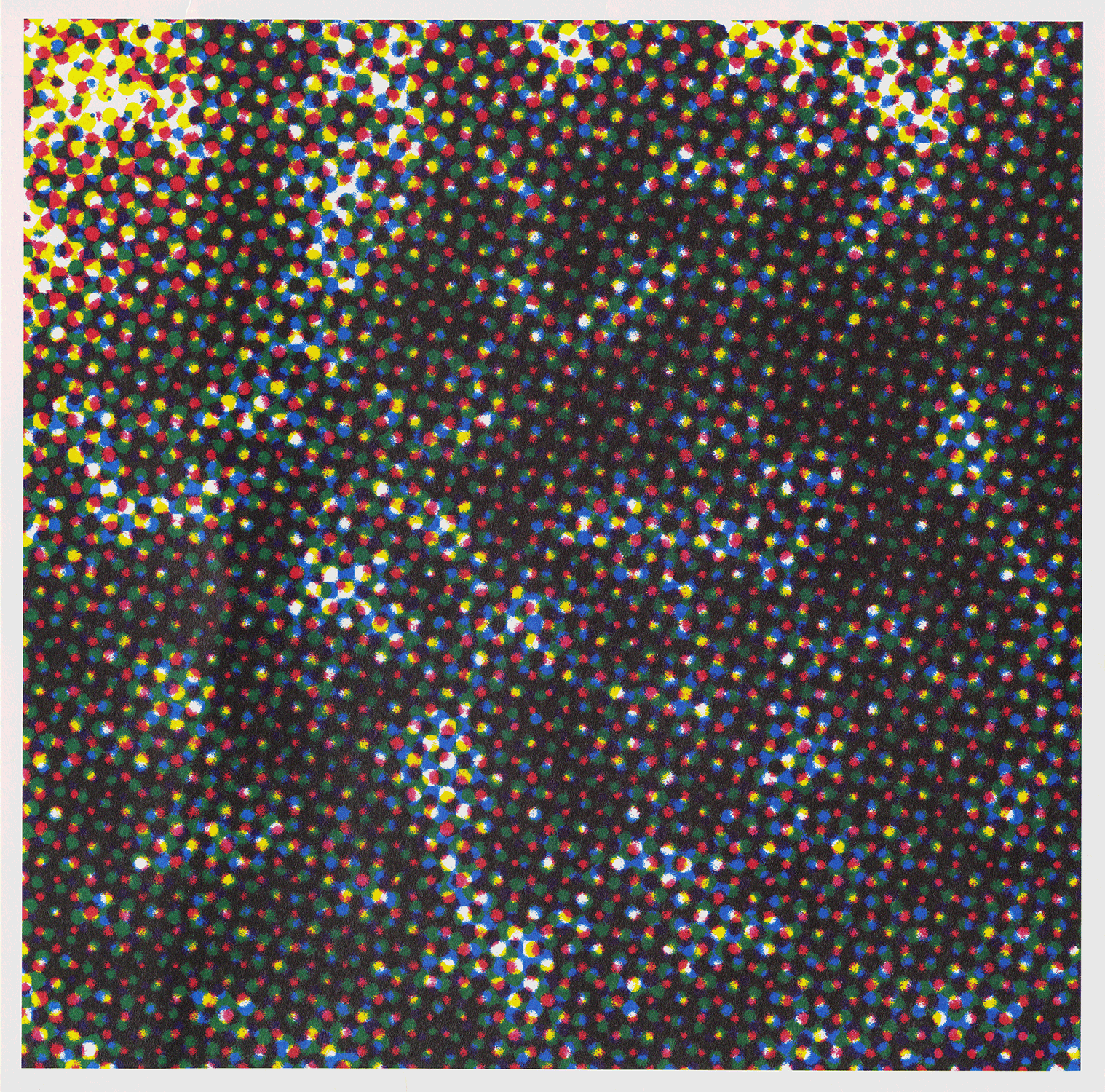


![Naeba Playthroughs b/w Nantes Playthroughs (C-96) [2022]](https://images.squarespace-cdn.com/content/v1/5277a996e4b057c7282d264c/0d0cd5c5-280b-40a3-8818-70372dbb356f/h-ra-011cs.3.jpg)
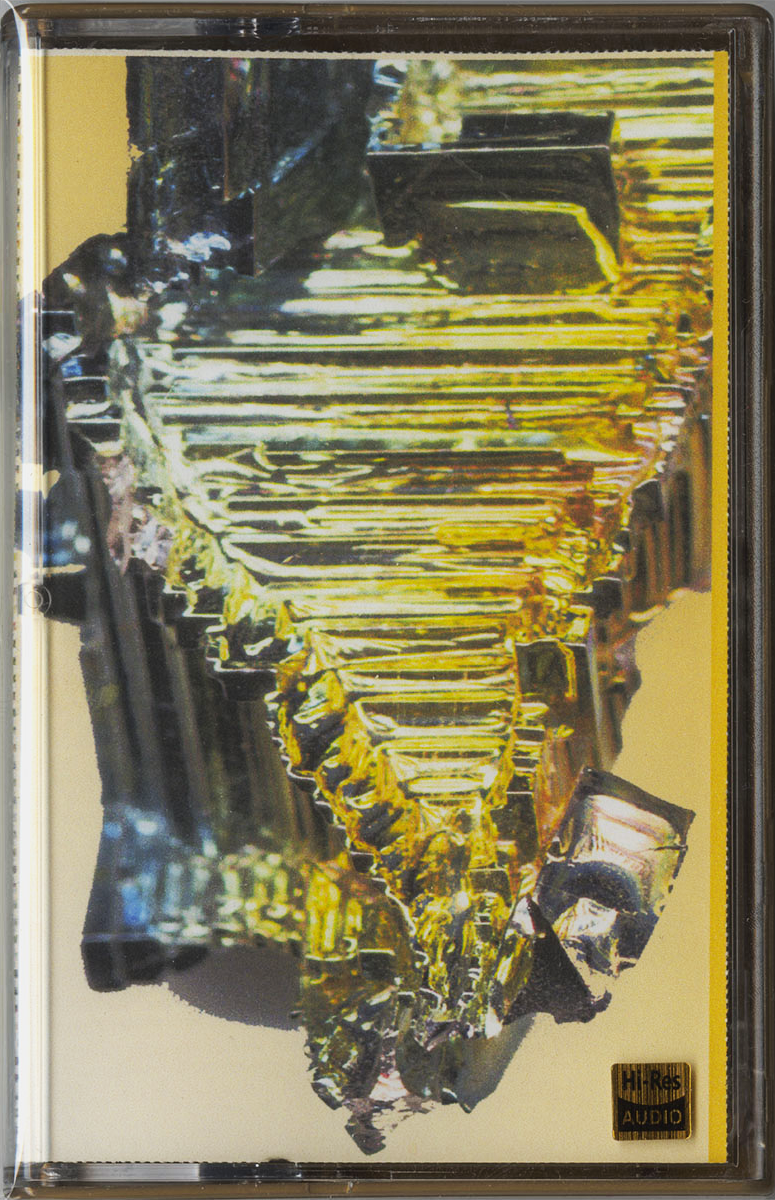
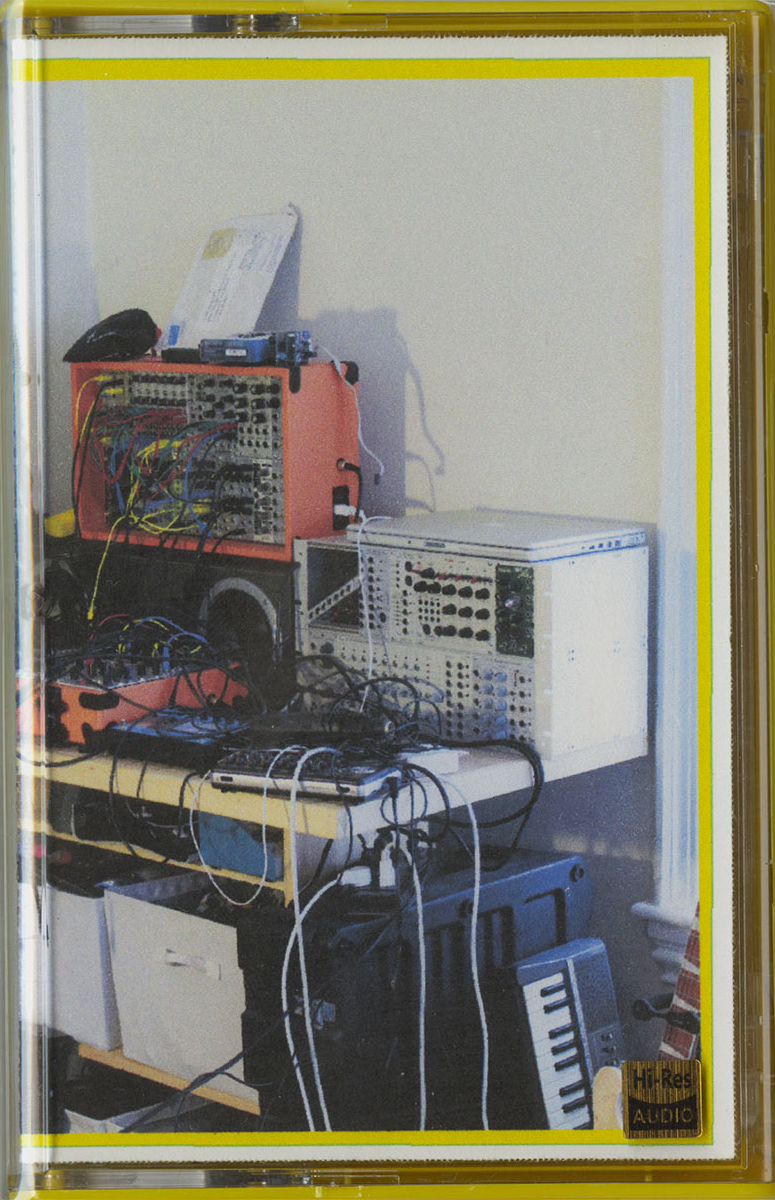
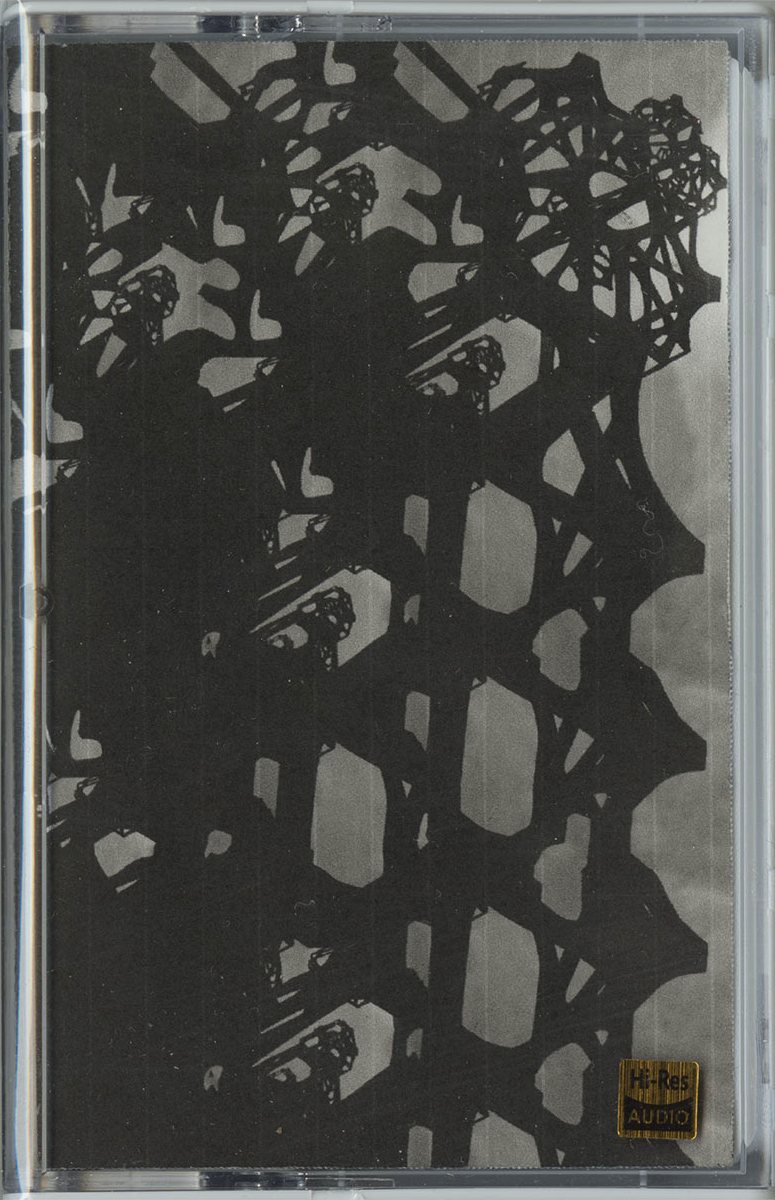

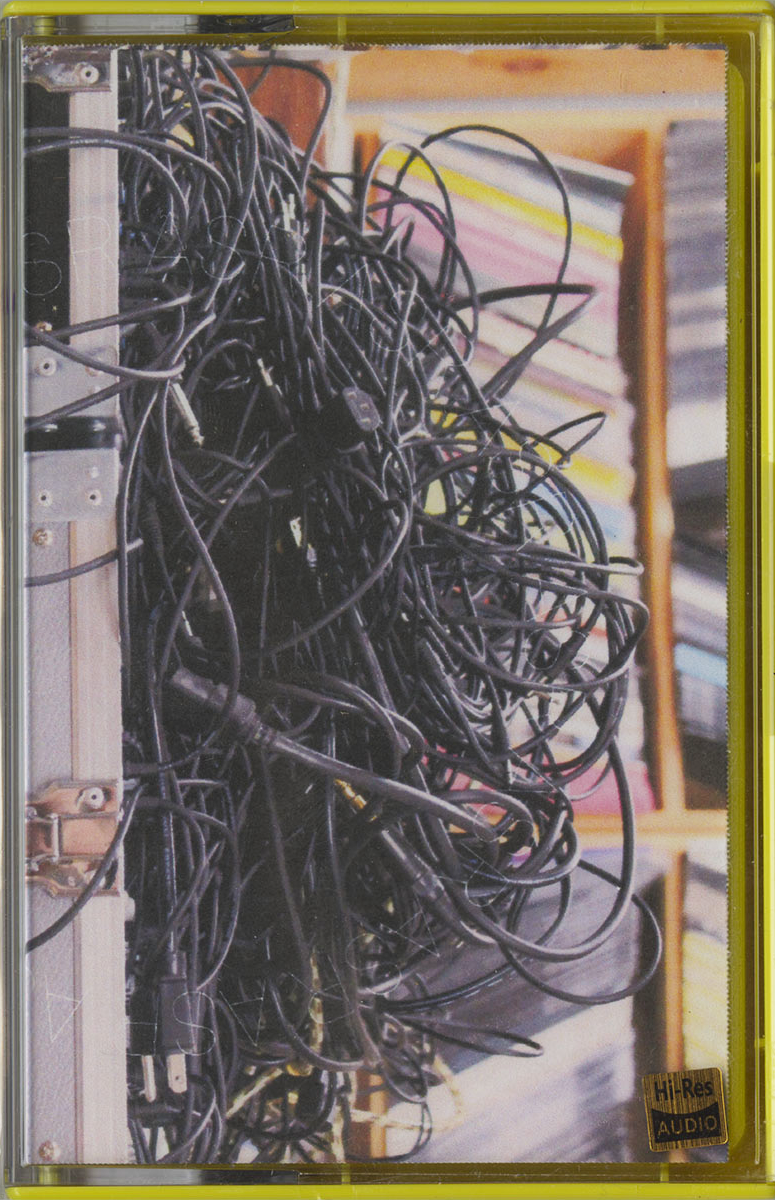

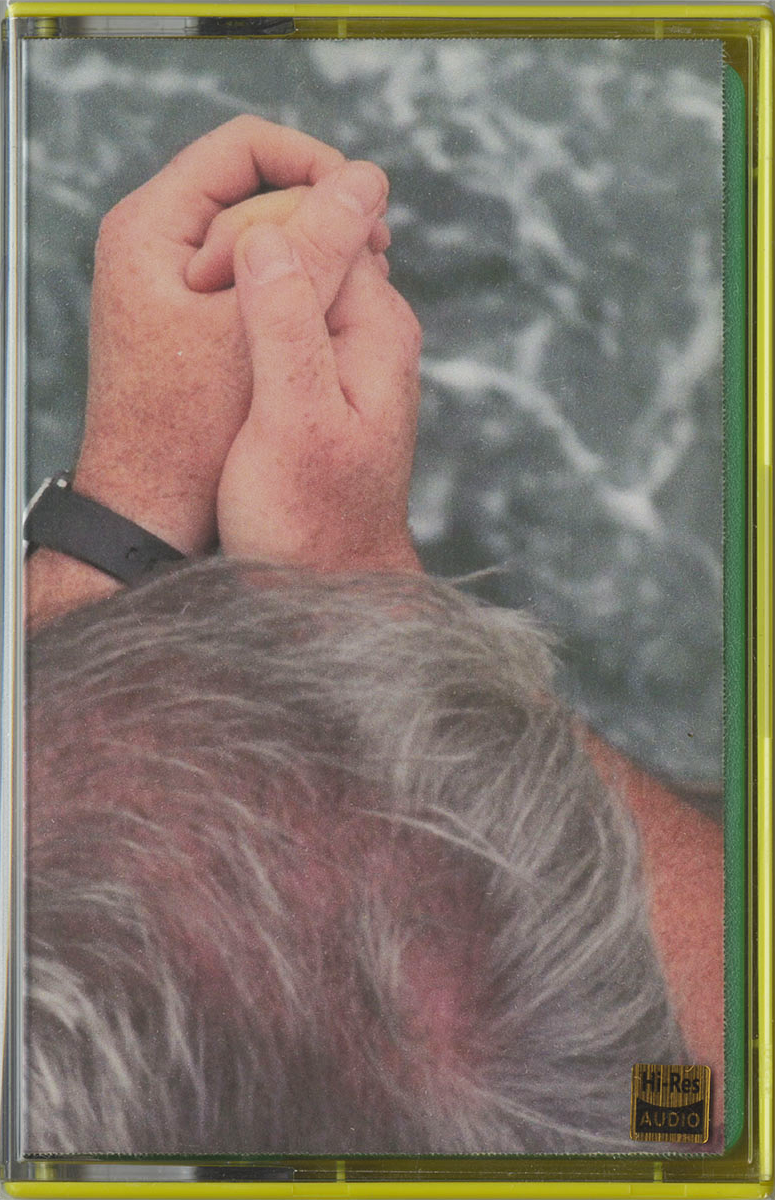

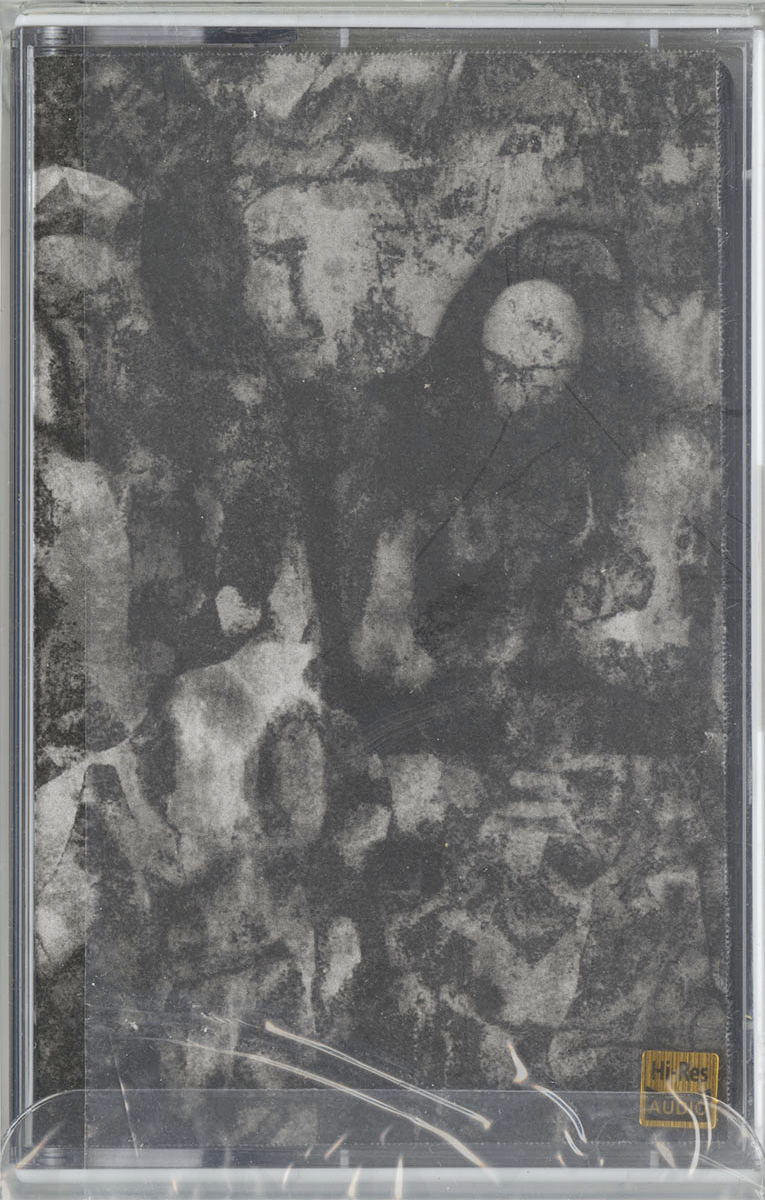
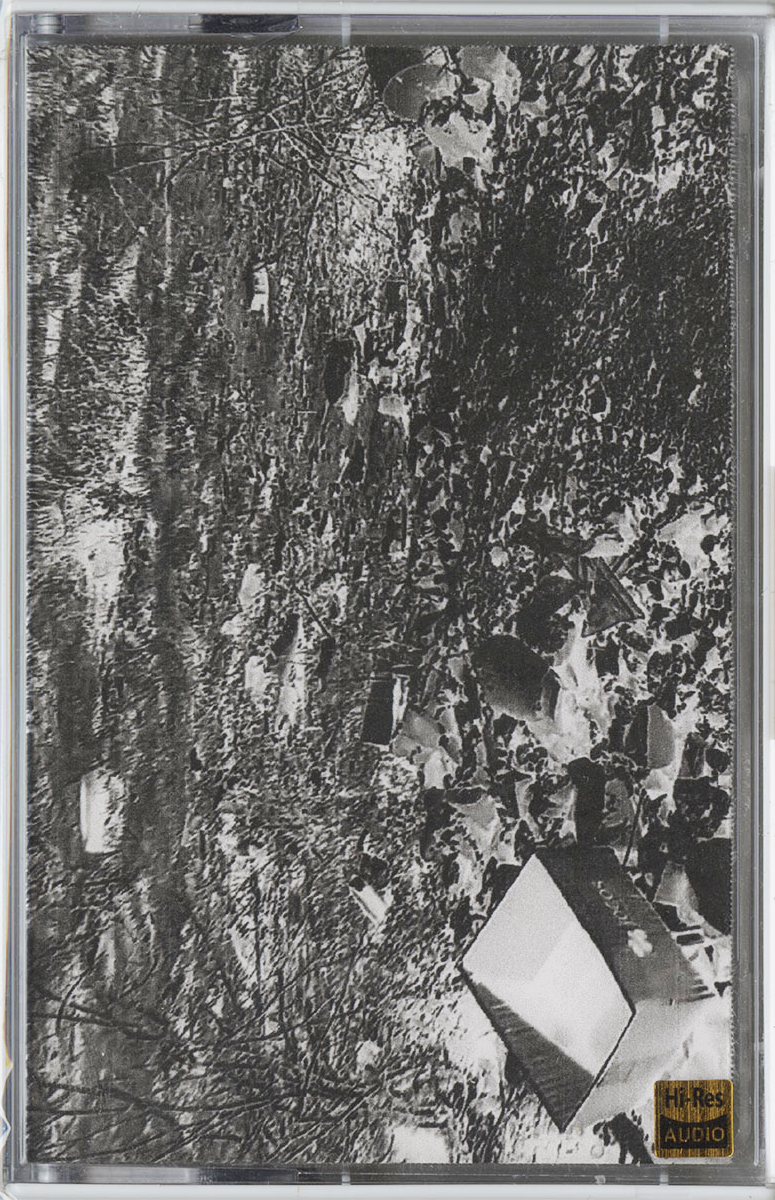

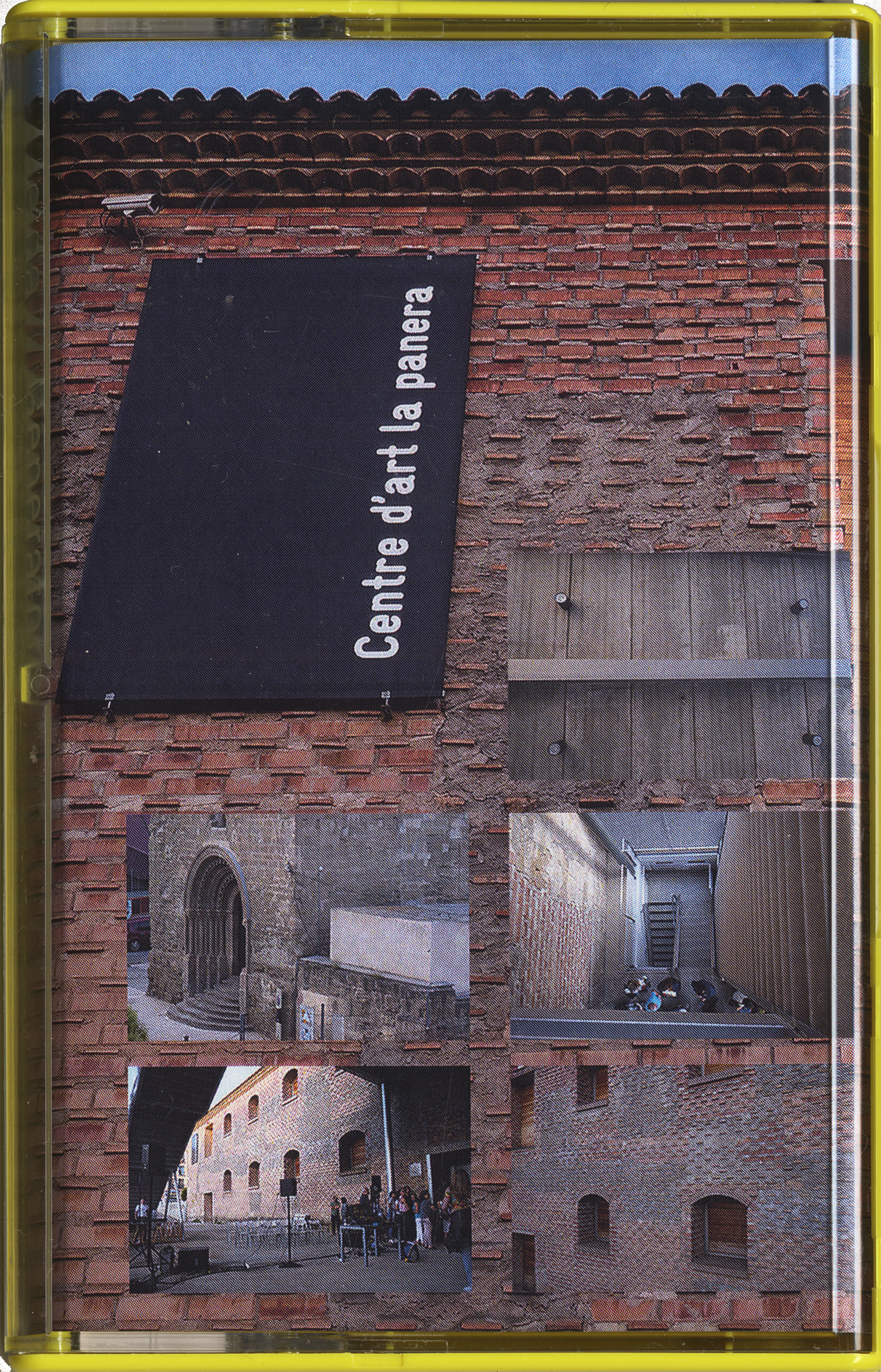
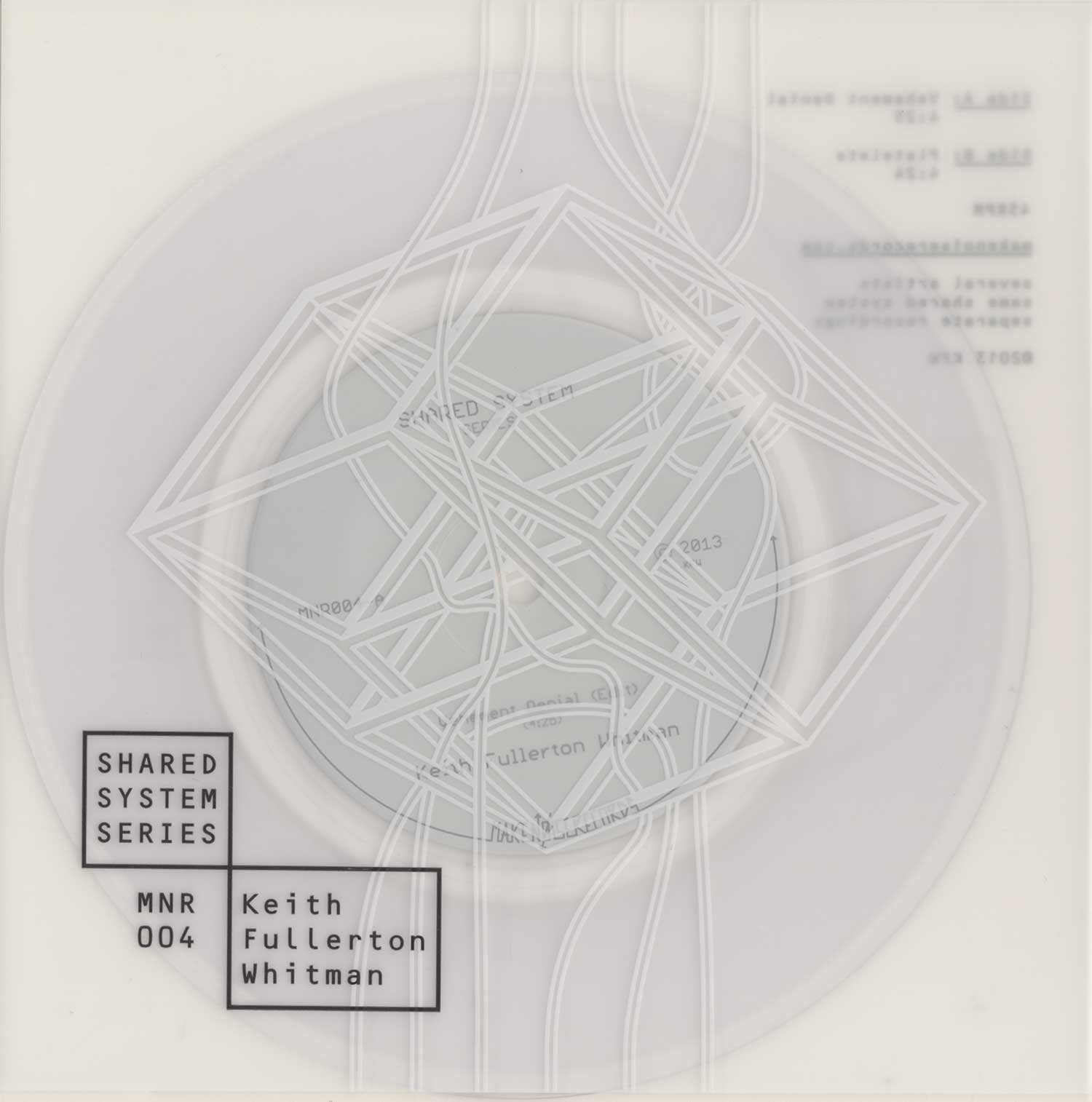
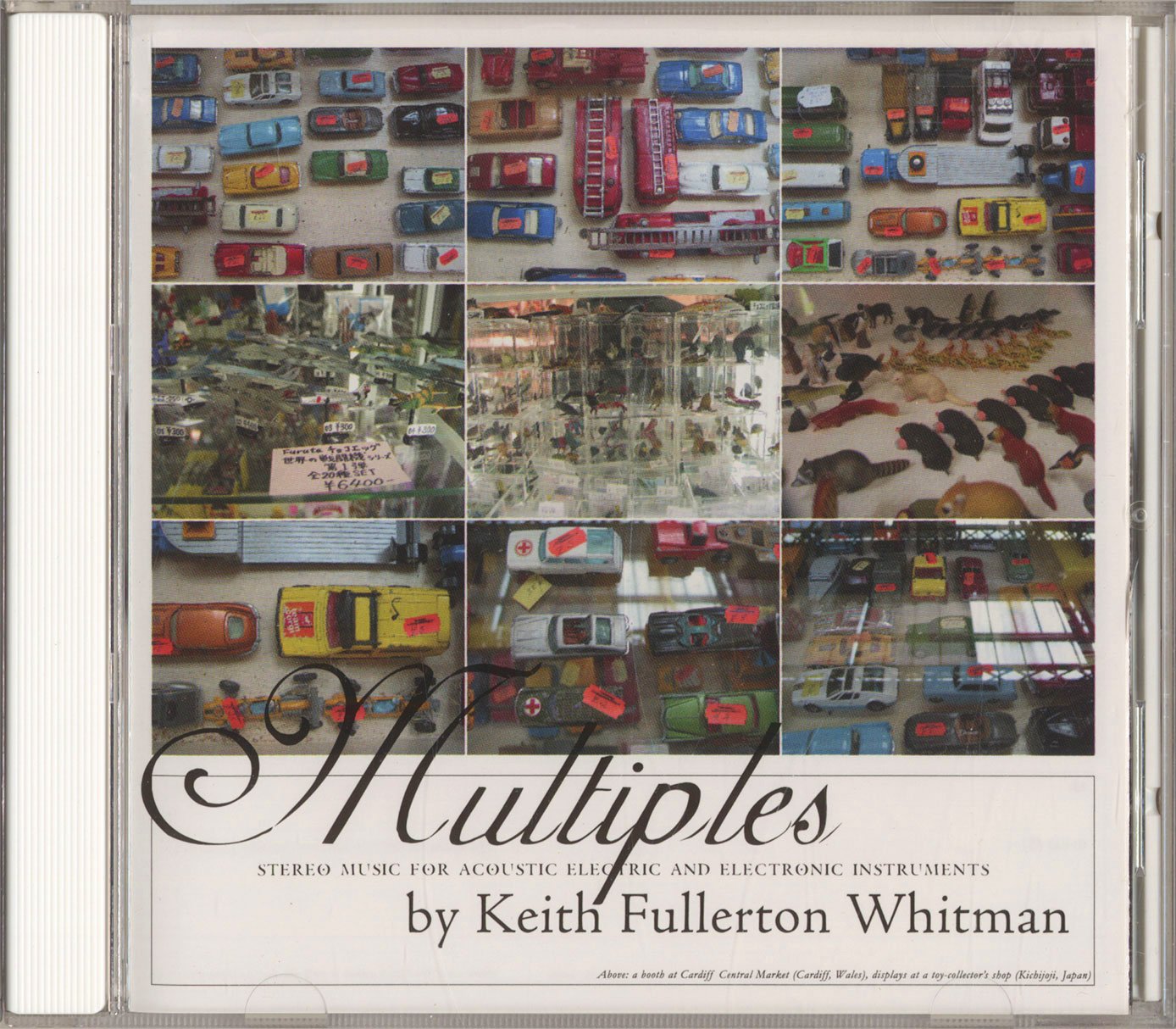
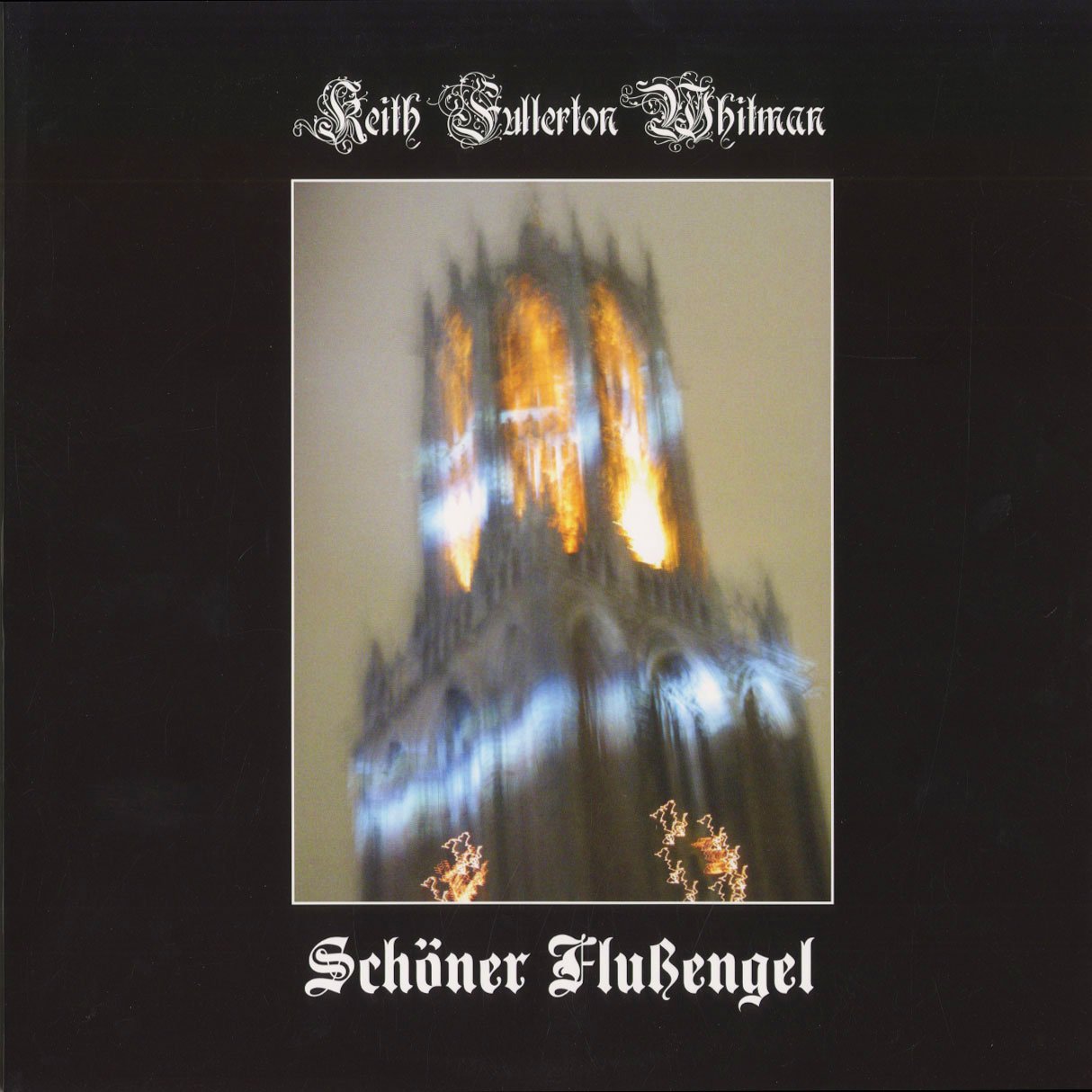
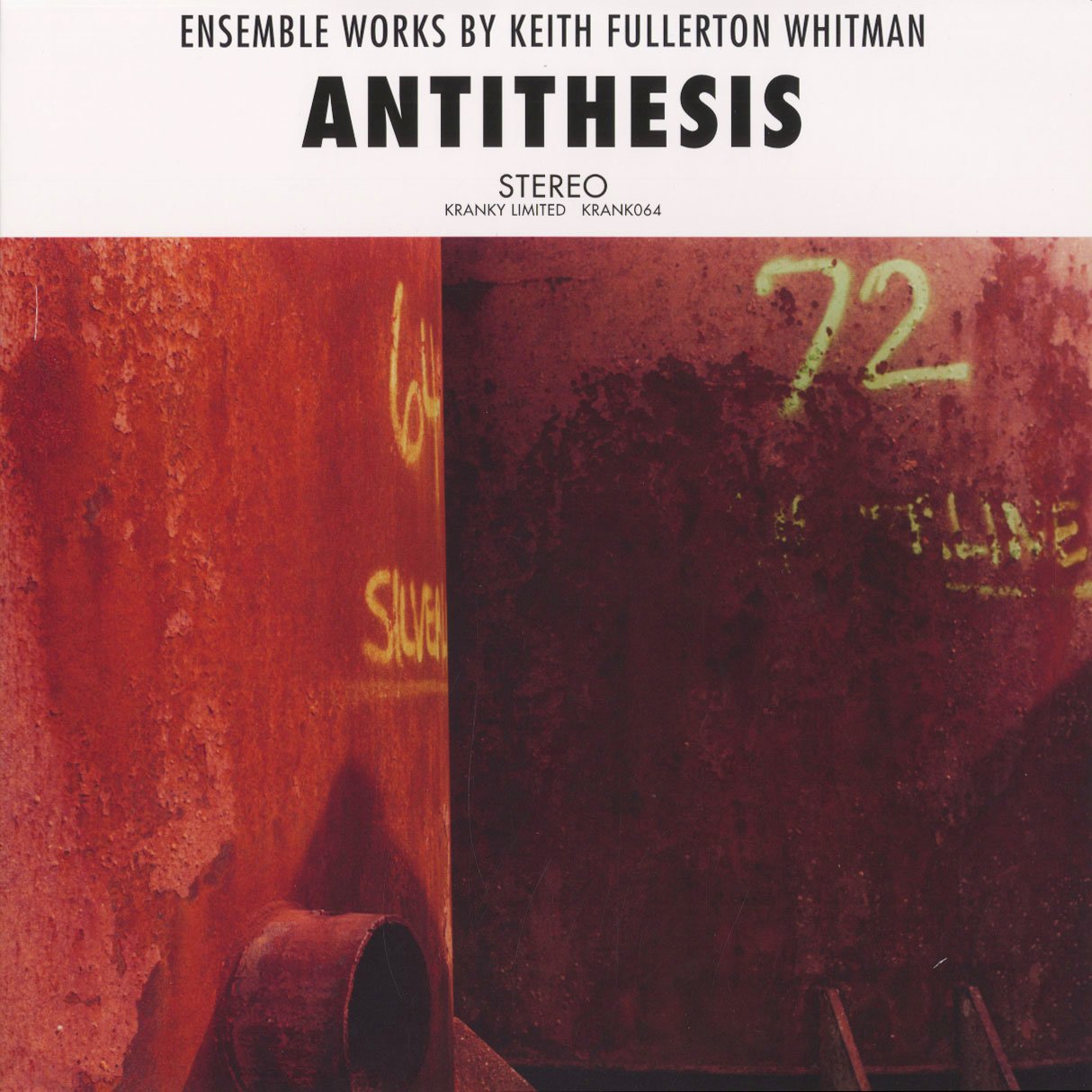
![Playthroughs (CD) [2002]](https://images.squarespace-cdn.com/content/v1/5277a996e4b057c7282d264c/1507078642848-GBV3B48BENUYDN7RF7IK/200210.krank055.a.jpg)